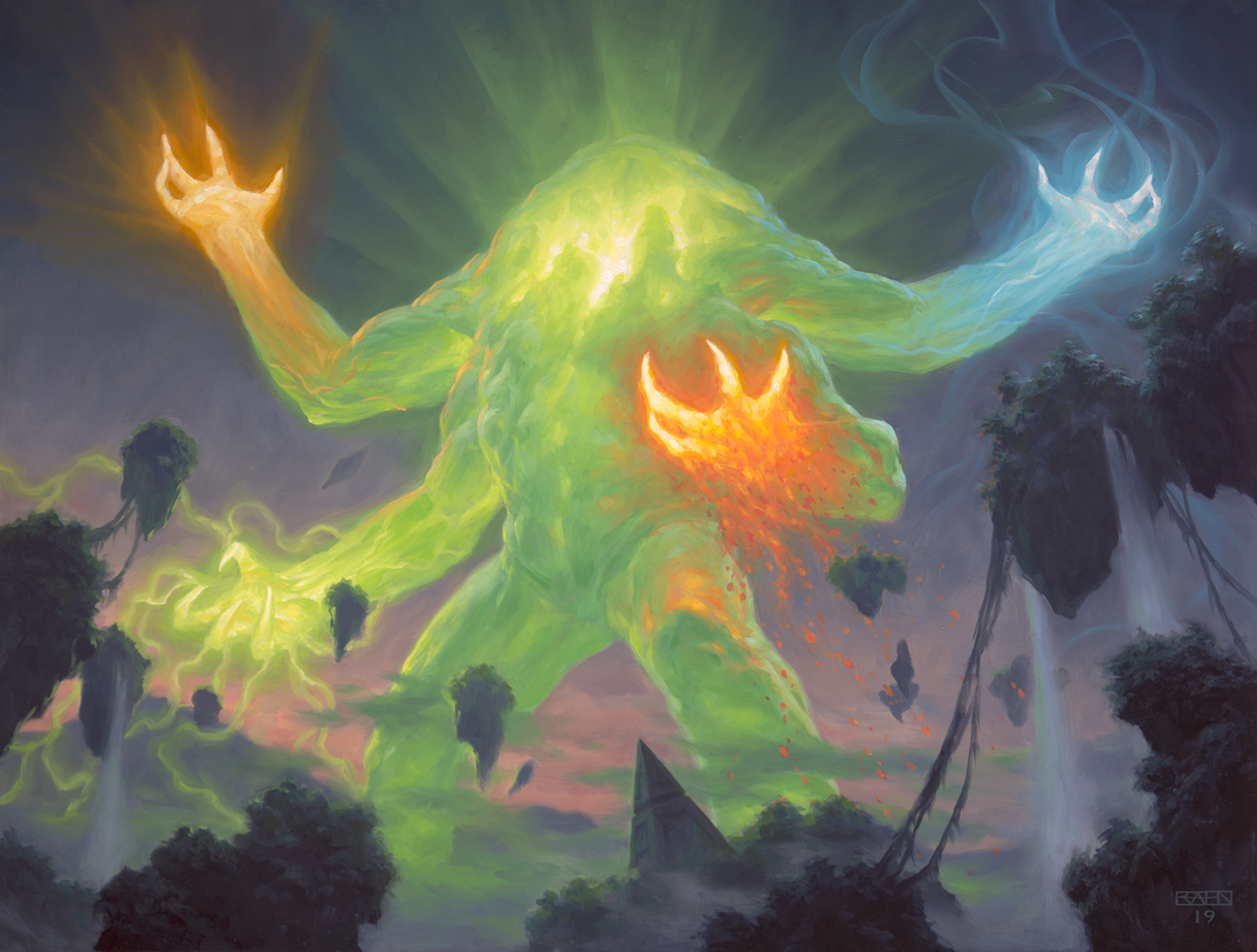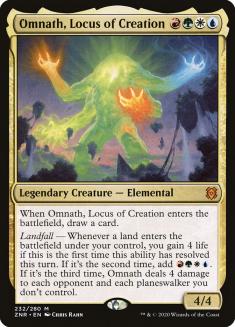Hello, and welcome to this edition of Sullivan’s Satchel. The SCG CON posts are starting to roll in, which is bittersweet for me. I’m happy that the event is happening in the first place, that many of my friends are excited for it, and that Star City Games has taken reasonable precautions to make such an event as safe as it can be without unduly burdening the average attendee or staff member. That’s great.
On the other side, I won’t be there, and I haven’t missed one of these events in quite a while. The Invitational itself is an incredible event, and I think the convention has improved over the years with regards to how much there is to do for people who aren’t qualified or interested in the main event. The last time I attended, the Command Zone was absolutely packed. I got to ask Sheldon what it meant to him to have had such a big part in bringing people together like this. He gave me some affirmative grunt; it was one of my favorite Magic moments of the last five years.
In short, I hope it goes well. I don’t know if people appreciate how tough the last eighteen months have been for SCG, a company with a lot of resources and expertise tied up in events that weren’t plausible. But I’m happy that the people responsible for such things will have their talents unlocked, and I’m happy that my friends will get to escape into that environment for a few days. But a big part of me will be sad paying attention from the sidelines.
With that, the questions. As always, you can send in yours to [email protected] or DM me on Twitter @BasicMountain. I answer them as I do, and each week a question of my choosing gets the title of Question of the Week, with its author receiving $25 in SCG credit.
Eric Wong asks:
Full disclosure: I ceased working with Play Design at the end of June of this year, and I didn’t hear anything about this team while I was there, so I can’t speak at all to process, underlying ideology, etc. Everything that follows is speculative.
Typically, play testing resources are committed to three things — Standard, Commander, and Draft, barring sets with a more specific charge like Modern Horizons. It’s easy to collapse “Commander” into “Casual,” yet it’s anything but. Commander presupposes a robust collection (at least eventually — the intro decks do good work for onboarding people to the format), a knowledge of a complex set of rules and restrictions, at least three people to play with, and enough information to build decks under a specific set of rules. Even if you want to say the format is “casual” (as in, not competitive, at least not typically), it requires a substantial level of investment across a number of fronts to engage with.
“Casual” play, as I would define it, speaks more to people playing without the knowledge of what the formats are, plays with a very limited selection of cards, is meaningfully bounded by card rarity, etc. To me, that says — what is the experience of a new player? Let’s say you and your friend each bought ten packs of the new set and built decks out of them; how do those decks feel? How complicated are the cards of low rarity and how much do the mechanics of a set presuppose you have a large collection?
The stuff in the above paragraph, I think, was something of a blind spot of Play Design during my time there. That’s no one’s fault — they have an extraordinary amount of work on their plate, and in that environment the burden is on someone to say that an element is part of their responsibility, not for them to search it out themselves. So in terms of both need and formalizing process I think the creation of this team is a very positive step. That said, I can’t speak exactly to how they’re defining “casual” or what they see as their directive, so I don’t want to speak to what the results are going to be, just that as a theoretical exercise I think this is a good allocation of resources and directives.
From Peter Leja:
It’s a mix of both. There are underlying principles and those are sort of agnostic of how things actually play out, but the details matter, too, and sometimes that can make a “good” design “bad” in context (or the other way around), and that’s why playtesting is so important; the theory can only get you so far.
A good example of this is Omnath, Locus of Creation.
It does adhere to some good principles — appealing, ostensibly difficult to cast (so implies some mutual exclusivity with some other good cards), not the worst gameplay, dramatic moments, and so on. It’s also a ton of rate, and anytime you’re going to do something with a ton of rate, that’s worth scrutiny even if the principles are good. For me, the sin of Omnath isn’t Omnath itself, but Omnath itself combined with its similarities with Uro, which also had a ton of rate, is essentially the same card, and appeared in some of the same colors as Omnath. That’s a spot where I think, at minimum, the call to action needs to be, “This design is cool, but can we try it a year from now?”
But design work involves so much ambiguity and uncertainty that it’s extremely dangerous to try to analyze in hindsight. It’s useful to think of any outcome as “one possibility among many,” not just the only way it can play out. Time Warp is a good example of this. It was fairly tame in Standard for its first printing, in Tempest. Five-mana cards are a tough sell when people are dying on Turn 2, and Time Warp doesn’t align with blue’s incentives when the best half-dozen or so cards are counterspells. That’s “one possibility among many,” and the card (and its variations) have proven troubling in Standard under a different range of circumstances and incentives. That isn’t to say “don’t do Time Warp” necessarily, just that it’s dangerous and dishonest to balance the expected outcomes around the first printing.
From Friend of the Satchel™ Ben Seitzman:
Balancing around: Player, Iconography, Cultural Cache, Looking Dope, Team, etc. I’m counting ABA options here.
- #5 Vince Carter “Talons Exploding Through Basketball Sneakers” Toronto Raptors
- #4 Kevin Durant Seattle Supersonics (possible bias here as I own this, purchased in Seattle during his rookie season, and it gets compliments in public each time I wear it)
- #3 Allen Iverson “Phila” Philadelphia 76ers
- #2 George Gervin “San Antonio” San Antonio Spurs
- #1 Julius Erving “Virginia” Virginia Squires
Finally, the Question of the Week™ , and winner of $25 in SCG credit, from Sam Higgins:
As I discussed on the podcast, the issue with miracle isn’t really the mechanic. Magic is a game built around variable quality in draw steps, topdecks, and all the rest. The issue is the presentation; it rubs your nose in the “randomness,” and for players who think they don’t like randomness (emphasis on “think,” as they’re playing an extremely random game in the first place), that’s really obnoxious.
The biggest place where that sort of player will push back is on backloaded randomness. Rosewater has spoken about this at length; “some random stuff happens, but then I make a decision with all the information and agency, such as it is” is much easier for them to digest than “make a bunch of decisions, but now flip a coin or roll some dice.” So clash is really rough, the die-rolling cards from Adventures in the Forgotten Realms, even individual designs like Zombie Cutthroat, which was very powerful in its Draft format and felt very “random” in practice.
Notice clash and die-rolling. Those mechanics are much worse from a design sensibility standpoint than miracles, but don’t receive nearly the same vitriol from competitive players. Why? The cards just aren’t that good, intentionally or otherwise. You can indulge that space a little bit, and so long as it isn’t a huge part of the experience, it can be bracketed off and forgotten. I’m not saying that’s the ideal solution, but if you think that space is fun for some players but likely to piss off competitive players, “make the cards not that strong” is a reasonable way to thread the needle.



